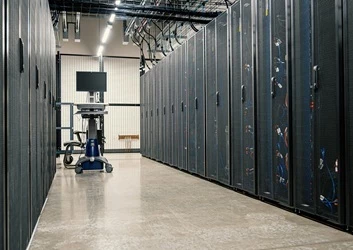SpaceX: The Next Frontier of Space Data and Analytics
How AI and Advanced Analytics are fueling the commercialization of space
Add bookmark
Space travel has entered a new era. Though government agencies such as NASA and Roscosmos were responsible for developing the initial technology required to fly humans into space, private companies such as SpaceX are now spearheading the development of the next generation of reusable space shuttles (in addition to manufacturing a variety of other space-bound equipment such as satellites).
Though the commercial space race has only just begun, SpaceX has emerged ahead of the competition, recently landing a $2.9bn contract with NASA to build a moon lander. This follows a $7 billion contract with NASA to ferry supplies to and from the International Space Station finalized in 2020.
At the heart of SpaceX’s success lies data. From designing a vehicle that will survive the harsh conditions of space to calculating payload size, data is fueling the next wave of space travel. Here’s a look at how.
AI-Powered Space Travel
Similar to modern airplanes, SpaceX uses an AI powered autopilot program to navigate them safely from launch to the ISS docking port. According to Community AI, the AI works by calculating parabolic flight, fuel usage and reserves, liquid engine sloshing, weather and a number of other factors that could impact the flight. The AI uses this information to establish the safest as well as fastest flight path. Once the ship has reached its destination, the autopilot uses convex optimization algorithms and computer vision to determine the best landing spot for the Dragon capsule.
Though details on this particular project are sparse, SpaceX’s emergency abort system also uses AI to, in the event of a catastrophic event, disengage the spacecraft from the rocket and safely guide astronauts back to earth.
Similar to the Dragon, SpaceX’s shuttle, it's satellites also use AI to steer through space debris and travel to and from earth. However, SpaceX’s automated system for avoiding satellite collisions has sparked controversy. In the past 2-3 years, SpaceX’s Starlink satellites have had a number of close calls, almost crashing into other satellites. In addition, its competitors say they have no way of knowing which way the system will move a Starlink satellite in the event of a close approach, making collision avoidance on their end nearly impossible.
The Next Generations of Satellites
SpaceX and Microsoft Azure have partnered to develop “smart” satellites for the space development agency. According to reporting by Space News, these SpaceX satellites will be outfitted with Microsoft Azure’s orbital emulator - a digital environment that, amongst other things, will enable the satellite to “process data on board and re-task themselves autonomously.”
As explained by Microsoft on its corporate blog, the Microsoft Azure’s orbital emulator is an “emulation environment that conducts massive satellite constellation simulations with software and hardware in the loop. This allows satellite developers to evaluate and train AI algorithms and satellite networking before ever launching a single satellite. Azure can emulate an entire satellite network including complex, real-time scene generation using pre-collected satellite imagery for direct processing by virtualized and actual satellite hardware.”
Is Space Data the New Big Data?
The most revolutionary, or perhaps prescient, data-related undertaking SpaceX is currently involved with is its collection of space data. Space data – a.ka. big data from space – is a term used to describe the camera and sensor information gathered by space-borne monitoring equipment (satellites) and the process of extrapolating patterns from it using analytical software. As the commercialization of space becomes a reality, space data and analytics will become increasingly valuable.
Become a Member of the AI, Data & Analytics Network TODAY!


































